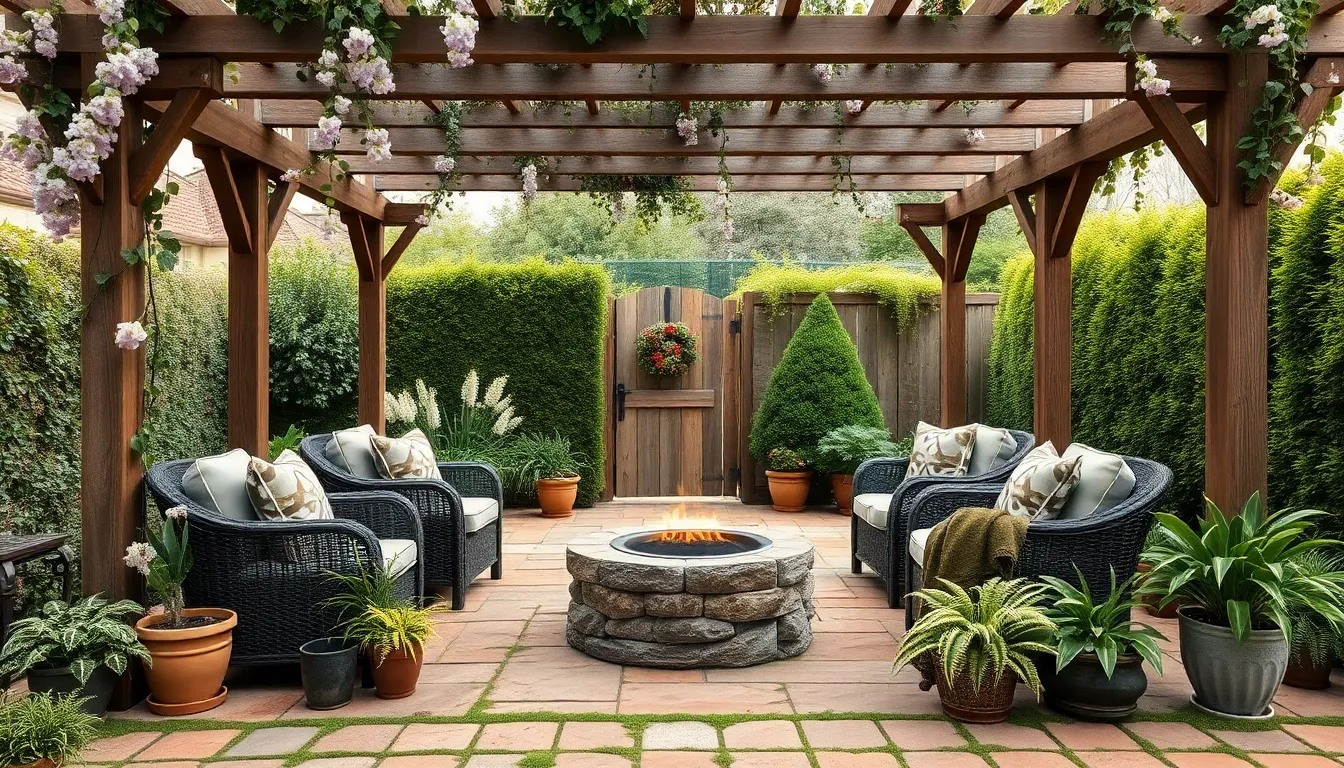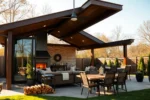Transforming your garden into a cozy retreat is a joyful adventure for both beginners and seasoned outdoor enthusiasts. Whether you’re just starting out or looking to elevate your current space, these 15 shelter ideas offer stylish, practical solutions to create comfort and charm right outside your door.
With options that suit every skill level and budget, this guide will inspire you to craft inviting nooks that protect you from the elements while enhancing your garden’s beauty. Get ready to boost your outdoor living enjoyment and feel confident in making your space a year-round haven.
Build a Rustic Wooden Pergola
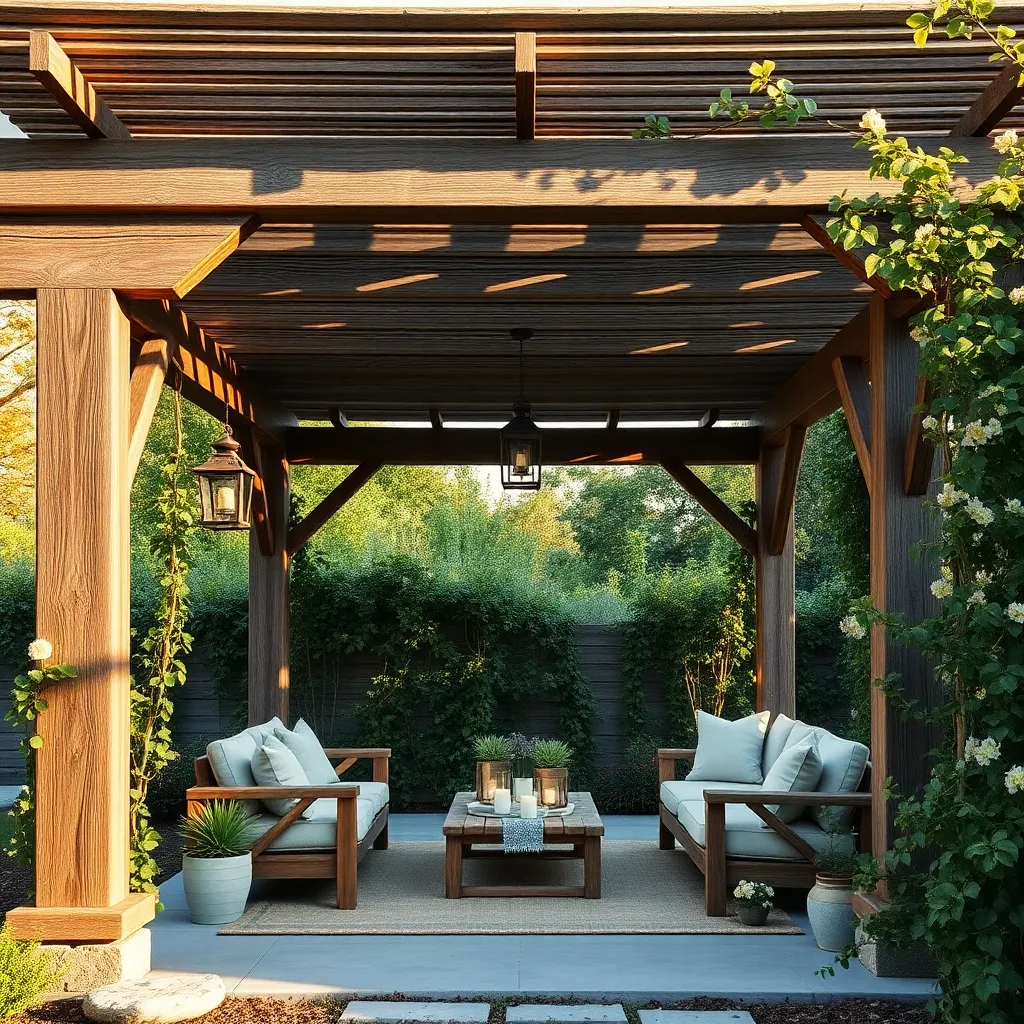
Creating a rustic wooden pergola is an excellent way to add charm and shade to your garden. Start with sturdy, weather-resistant wood like cedar or redwood, which are naturally rot-resistant and durable outdoors. Aim for a size that complements your space, typically around 10×10 feet, with posts set at least 3 feet deep in concrete for stability. Incorporate cross beams and rafters spaced about 12-18 inches apart to provide partial shade and a classic open roof design.
For an authentic rustic look, use rough-cut lumber and consider leaving the wood untreated or applying a natural stain to highlight its texture. Enhance your pergola with climbing plants like wisteria or grapevines for added shade and greenery over time. Advanced builders can add angled braces for extra strength or install a retractable canopy for flexible weather protection, making your pergola both beautiful and highly functional.
Install Transparent Vinyl Curtains
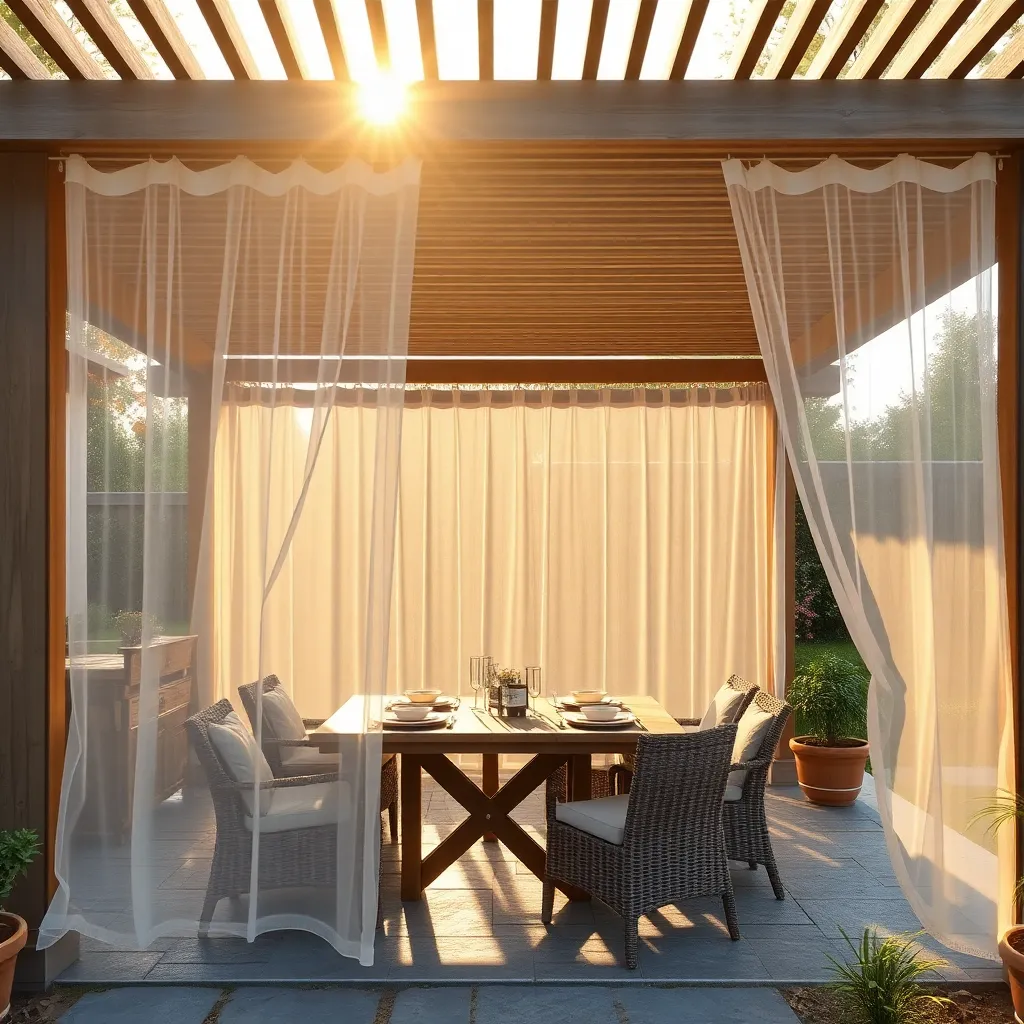
Adding transparent vinyl curtains to your outdoor shelter is an excellent way to protect your space from wind, rain, and insects while maintaining natural light and visibility. Choose heavy-duty, clear vinyl panels with grommets along the edges for easy hanging on hooks or rods. For a clean look and durability, opt for vinyl that is at least 20-30 mil thick and UV resistant to prevent yellowing over time.
To install, measure the length and height of your shelter openings precisely, then cut the vinyl curtains to size, allowing a few extra inches for overlap and attachment. Use snap-on fasteners or track systems for easy removal during warmer months, and consider adding weighted hems or magnets at the bottom to keep curtains stable in breezy conditions. This setup is perfect for both beginners and experienced DIYers aiming to create a weather-resistant, cozy garden retreat.
Add Cushioned Bench Seating
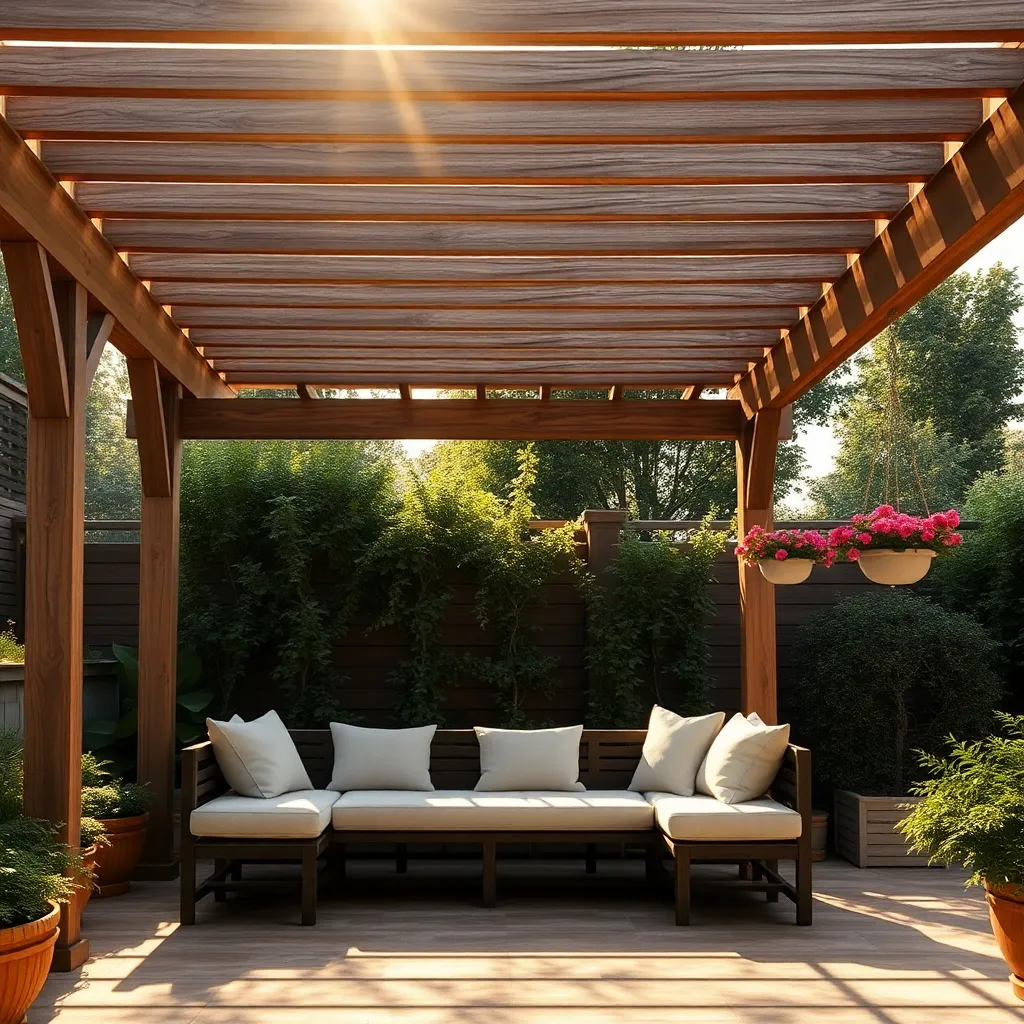
Adding cushioned bench seating to your outdoor shelter instantly boosts comfort and usability. Opt for weather-resistant materials like teak or cedar for the bench frame, and pair them with high-density foam cushions covered in waterproof, UV-resistant fabric to ensure durability and easy maintenance. Design the bench to fit the shelter’s dimensions—typically 18-20 inches high and 16-18 inches deep—for ergonomic comfort during long garden relaxation sessions.
For a more advanced touch, incorporate built-in storage beneath the bench to keep outdoor essentials handy and protected from the elements. Use marine-grade plywood or composite decking boards for the base to prevent rot. Add removable cushions secured with Velcro or ties to simplify cleaning and seasonal updates, making your sheltered garden spot both cozy and functional year-round.
Use Weatherproof Outdoor Fabrics

Choosing weatherproof outdoor fabrics is essential for creating a durable and comfortable garden shelter. Look for materials like solution-dyed acrylic or polyester blends that resist fading, mold, and mildew, ensuring your cushions, curtains, or canopy stay vibrant and functional through all seasons. For best results, select fabrics with a minimum weight of 9-12 oz per square yard to balance durability and ease of handling.
To maximize protection and style, consider adding removable fabric panels or roll-up curtains secured with UV-resistant fasteners or heavy-duty grommets. This approach allows you to adjust coverage based on weather conditions, providing shade on sunny days and shelter from wind or light rain. Additionally, regularly apply fabric protectors or water repellents to extend the lifespan of your outdoor textiles and keep your shelter looking fresh year-round.
Create a Bamboo Privacy Screen
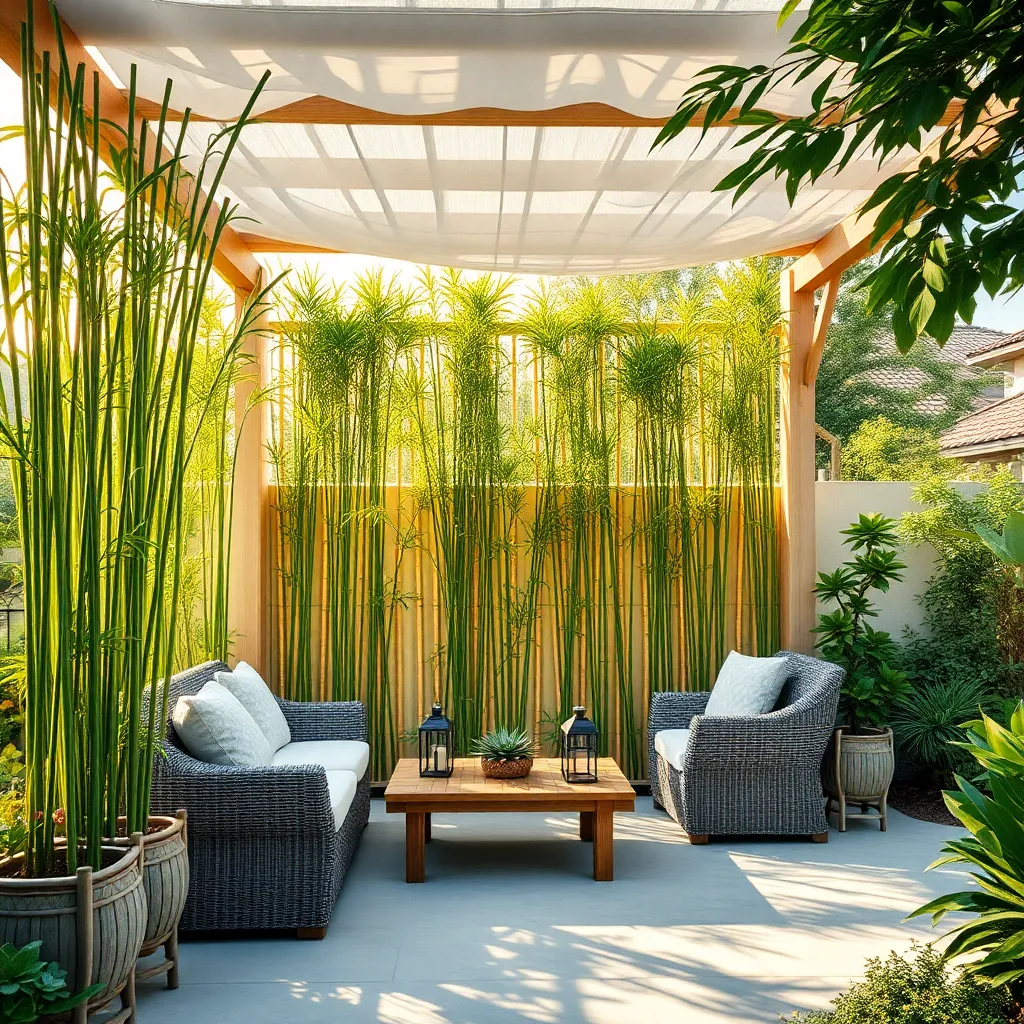
Bamboo is an excellent choice for a natural, durable privacy screen that adds texture and warmth to your garden. Start by selecting thick bamboo poles, ideally 1 to 2 inches in diameter, and secure them vertically to a sturdy frame made of treated wood or metal posts spaced about 3 feet apart. For stability, bury the posts at least 18 inches deep, and use galvanized screws or wire ties to attach the bamboo securely.
To enhance your screen’s effectiveness, consider layering the bamboo poles closely together to minimize gaps and increase privacy. For advanced durability, treat the bamboo with a weatherproof sealant to protect against moisture and UV damage. Adding climbing plants like jasmine or ivy can also create a lush, living wall that softens the structure while boosting garden ambiance.
Incorporate a Fire Pit Shelter
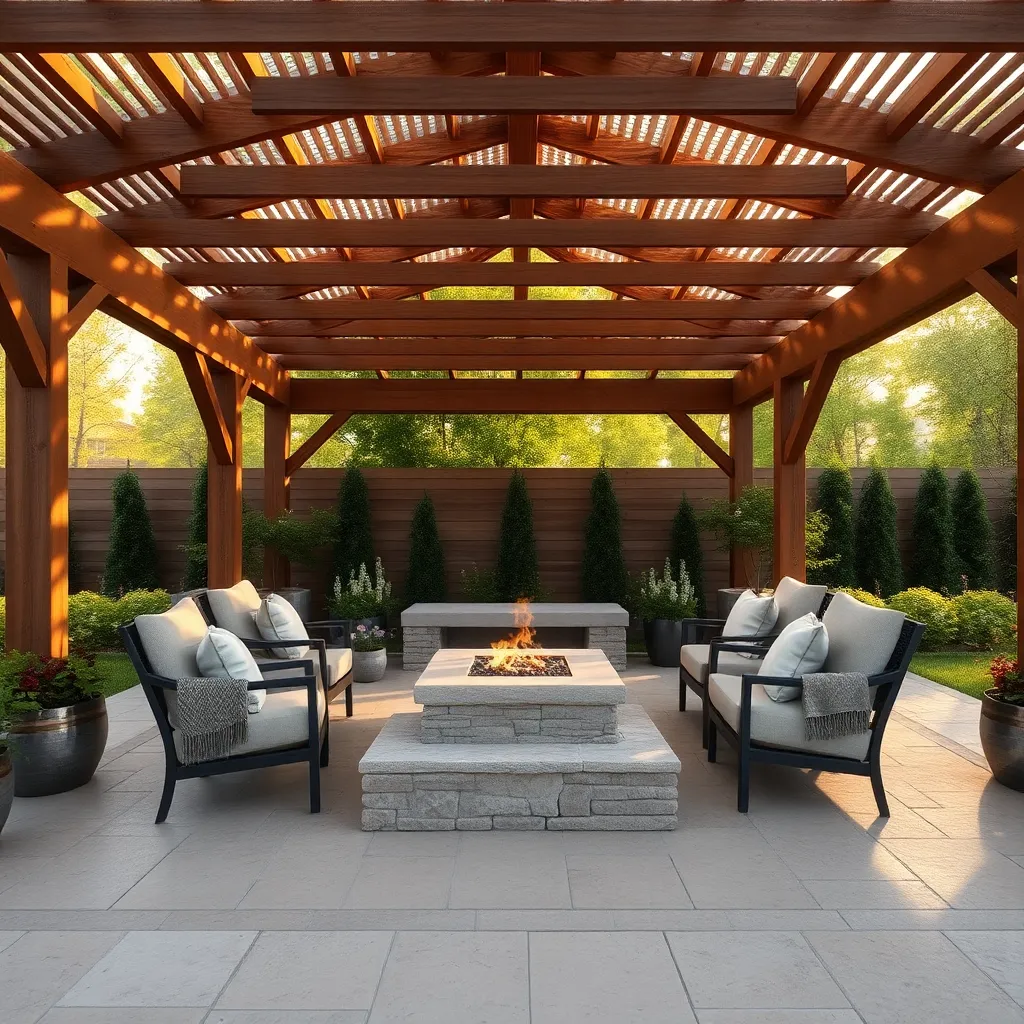
Incorporate a fire pit shelter by constructing a sturdy, weather-resistant canopy using materials like cedar or metal to protect your fire area from rain and wind. Aim for a shelter with a minimum height of 8 feet to allow smoke to rise safely, and include an open design or vents to ensure proper airflow and reduce smoke buildup. Adding stone or brick flooring beneath the fire pit enhances safety and durability, while built-in seating around the shelter creates a cozy gathering spot.
For advanced functionality, consider integrating a retractable roof or removable side panels made from durable, weatherproof fabric to adjust shelter coverage according to the weather. Enhance the ambiance with LED lighting or heat lamps mounted on the shelter’s frame, ensuring your fire pit area remains inviting and usable even on cooler evenings. Remember to position the shelter a safe distance from flammable structures and trees to maintain safety compliance.
Hang Outdoor String Lights
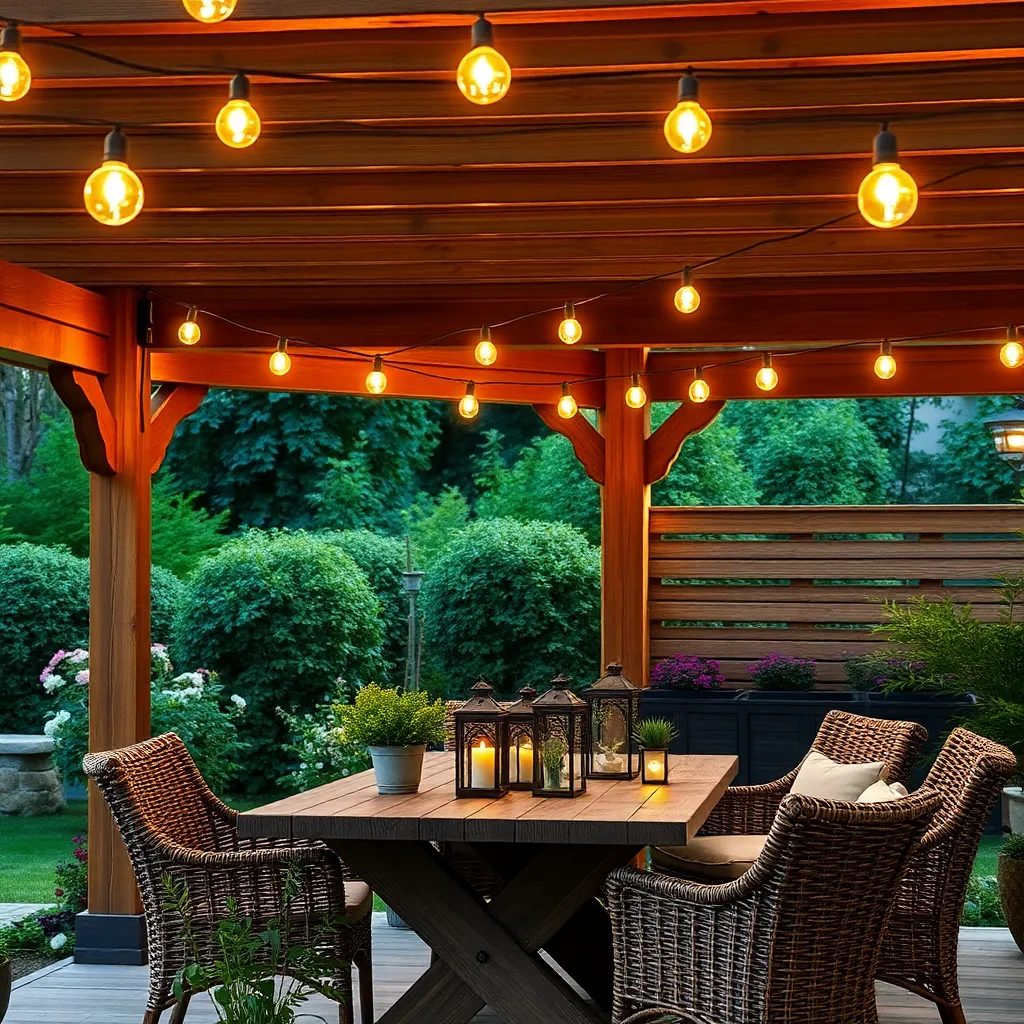
String lights instantly add warmth and ambiance to any outdoor shelter, making your garden space inviting after dusk. For a sturdy setup, use weatherproof LED string lights with clear or warm white bulbs, and secure them with heavy-duty hooks or eye bolts attached to wooden beams or metal poles spaced 6 to 10 feet apart. Consider arranging them in a crisscross or zigzag pattern overhead to maximize light coverage and create a cozy canopy effect.
To elevate your design, incorporate dimmable or color-changing bulbs controlled via smartphone apps for versatile mood lighting. If you have a pergola or gazebo, run the lights along existing crossbeams, adding cable clips to keep wires tidy and prevent sagging. For a more advanced touch, integrate solar-powered string lights with rechargeable batteries to save energy and reduce outdoor wiring complexity.
Construct a Canvas Tent Canopy
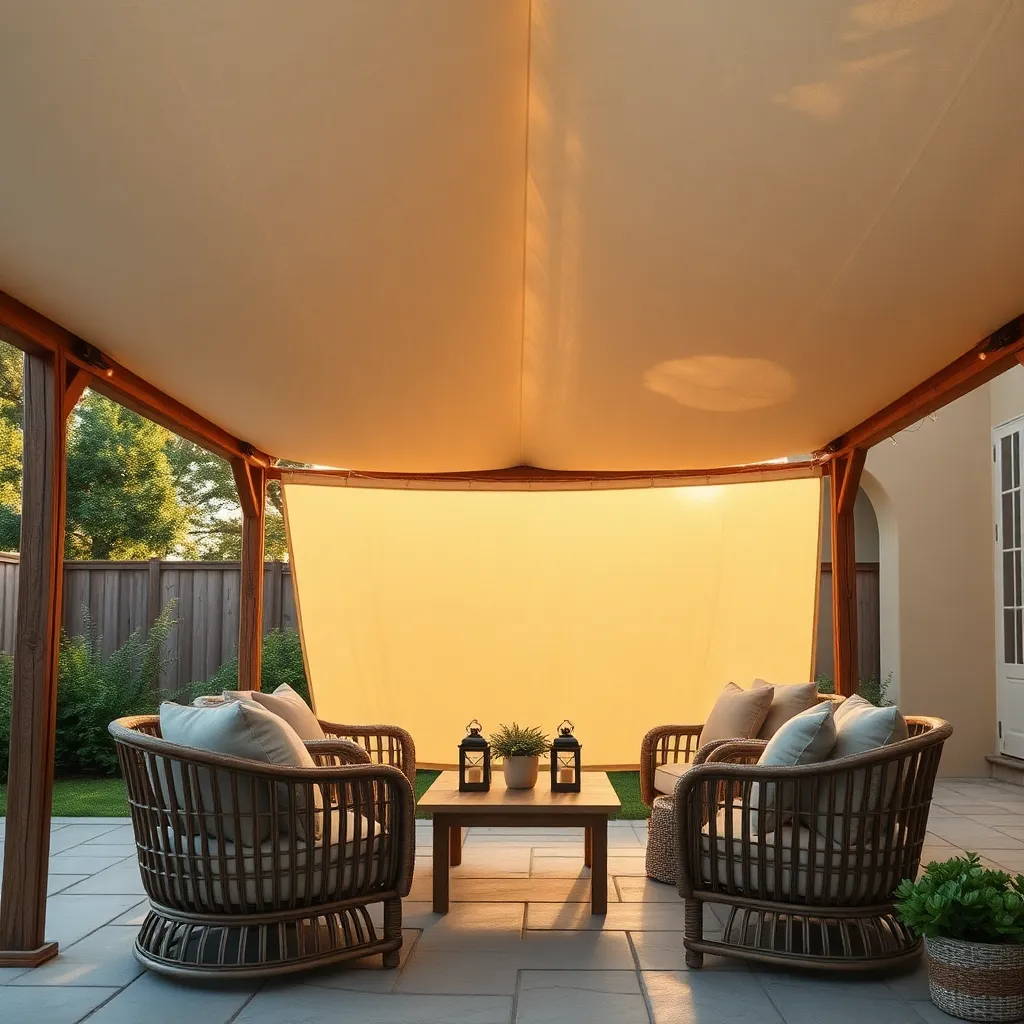
Creating a canvas tent canopy is a versatile and stylish way to add shade and shelter to your garden. Start by selecting durable, weather-resistant canvas fabric—ideally 10×10 feet or larger for ample coverage. Use sturdy poles or repurpose metal pipes to build a simple frame, securing the corners with heavy-duty stakes and adjustable guy lines for stability in wind.
For a polished look, consider adding reinforced grommets along the canvas edges to attach it securely to the frame. Beginners can use pre-made tent kits, while advanced gardeners might design angled sides for better rain runoff. Don’t forget to leave a slight slope in your canopy and include tie-back options so you can adjust airflow and sunlight easily throughout the day.
Plant Climbing Vines on Trellis
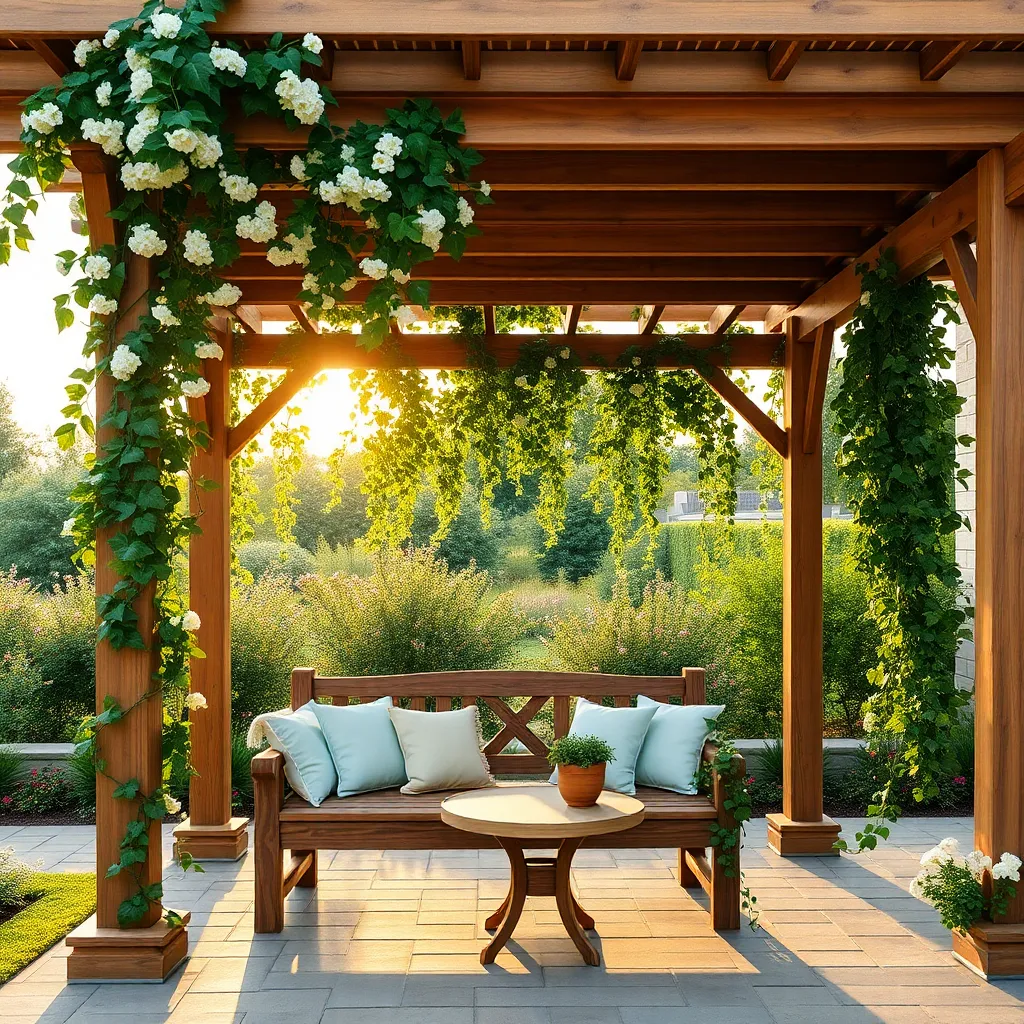
Integrate a sturdy trellis into your outdoor shelter design to create a natural, green wall with climbing vines. Choose durable materials like cedar or weather-resistant metal for the trellis frame, aiming for a height of 6 to 8 feet to accommodate vigorous vine growth. Secure the trellis firmly into the ground or attach it to an existing structure, ensuring it can support mature plants and withstand wind.
For beginner-friendly vines, consider options like clematis, honeysuckle, or climbing roses, which require minimal maintenance and offer beautiful blooms. Advanced gardeners can experiment with fast-growing varieties such as wisteria or grapevine, but be sure to provide strong support and regular pruning to manage their spread. Incorporate vertical spacing of 4 to 6 inches between trellis slats to guide vines upward effectively, and install drip irrigation to keep roots moist without wetting foliage.
Set Up a Portable Gazebo
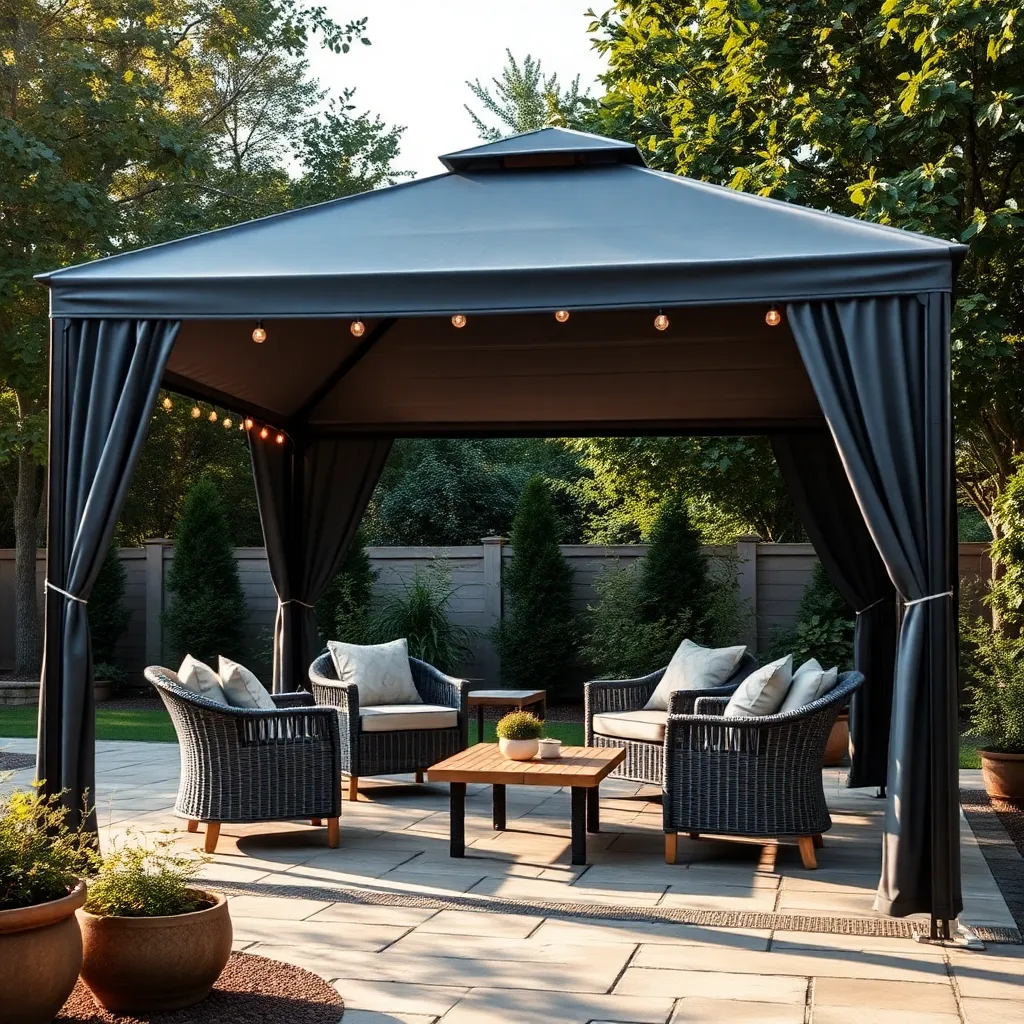
Setting up a portable gazebo is an excellent way to create a cozy, shaded spot in your garden that can be moved or stored easily. Choose a gazebo with a sturdy steel frame and weather-resistant fabric, ideally with UV protection and waterproof coating, to ensure durability. Aim for a size between 8×8 to 10×10 feet, giving enough space for seating or a small dining area without overwhelming your garden.
For a more polished look, anchor your gazebo securely using ground stakes or weighted bags, especially if you live in a windy area. Enhance comfort by adding side curtains for privacy and protection against insects or sun, and consider string lights or hanging planters to personalize the space. Remember, a well-ventilated design with mesh panels can keep the area airy while keeping bugs at bay.
Place Wind-Resistant Patio Umbrellas
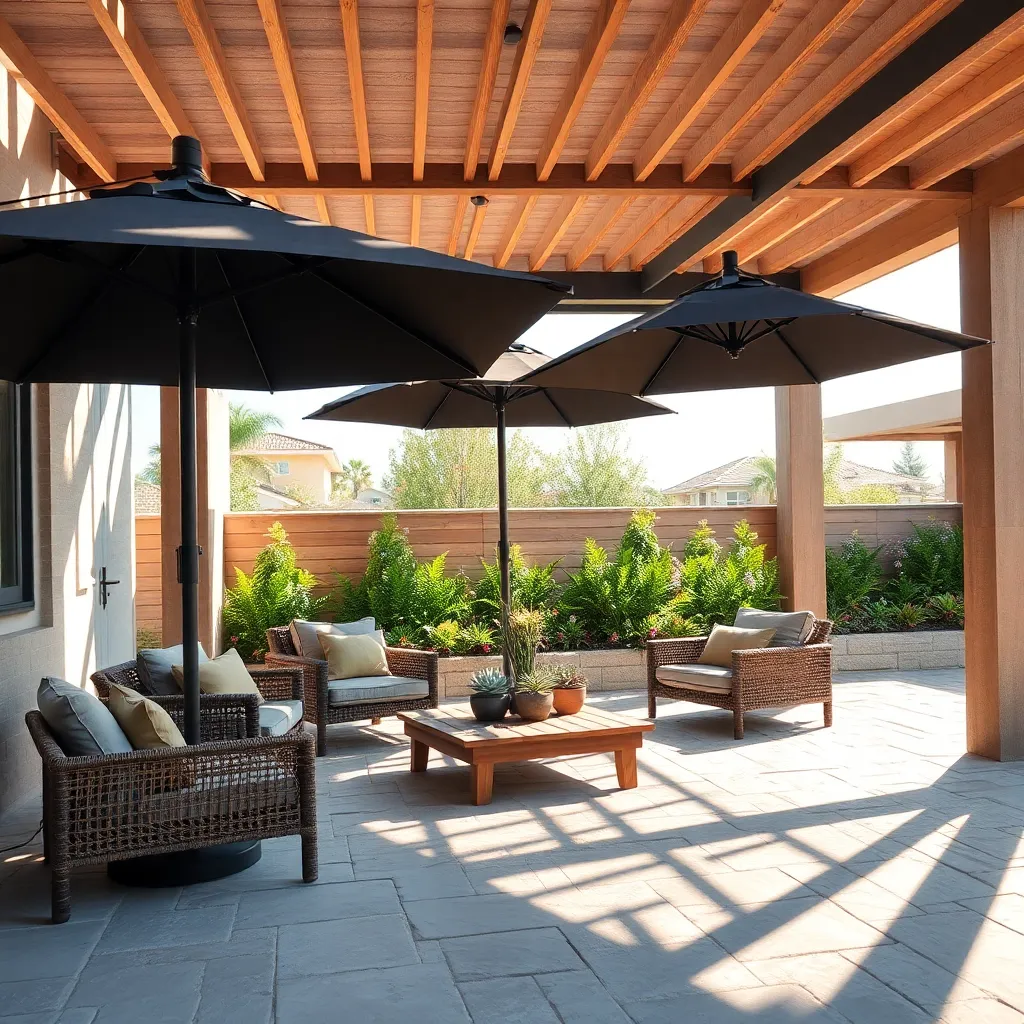
To create a cozy and practical outdoor space, choose wind-resistant patio umbrellas made from durable materials like polyester or acrylic fabrics with UV protection. Look for umbrellas with reinforced ribs made from fiberglass or aluminum to withstand gusty conditions. Opt for a base that can be securely anchored—heavy-duty, weighted bases or those that can be bolted to a patio surface provide added stability.
For advanced setup, consider tilting and rotating umbrella designs that allow you to adjust shade direction throughout the day while maintaining wind resistance. Installing umbrellas with vented canopies also helps reduce wind pressure by allowing air to flow through. Remember to close your umbrella during strong winds to extend its lifespan and maintain safety in your garden retreat.
Design a Cozy Corner Nook
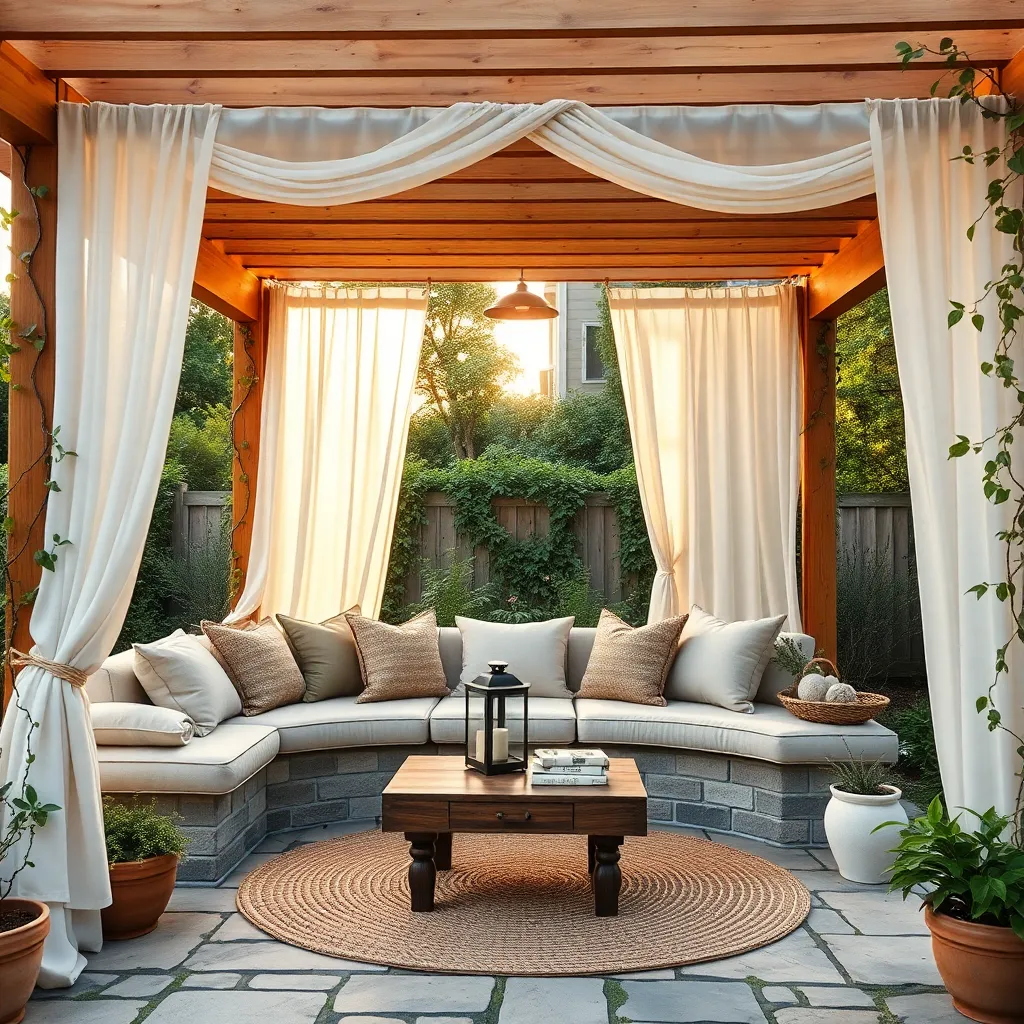
Create your cozy corner nook by selecting a sheltered spot in your garden, ideally near natural windbreaks like hedges or fences. Use sturdy materials such as cedar or redwood for framing, as they resist decay and add warmth. Consider enclosing three sides with lattice panels or trellises to provide privacy and support climbing plants for added shade and beauty.
Enhance comfort by installing a built-in bench or cushioned seating sized around 4-6 feet to accommodate multiple users without overcrowding. Add weatherproof textiles and outdoor rugs to soften the space, and include soft lighting such as solar-powered string lights or lanterns for evening use. For an advanced touch, incorporate retractable fabric canopies or roll-down bamboo blinds to adjust shade and protection throughout the day.
Attach Roll-Up Bamboo Shades
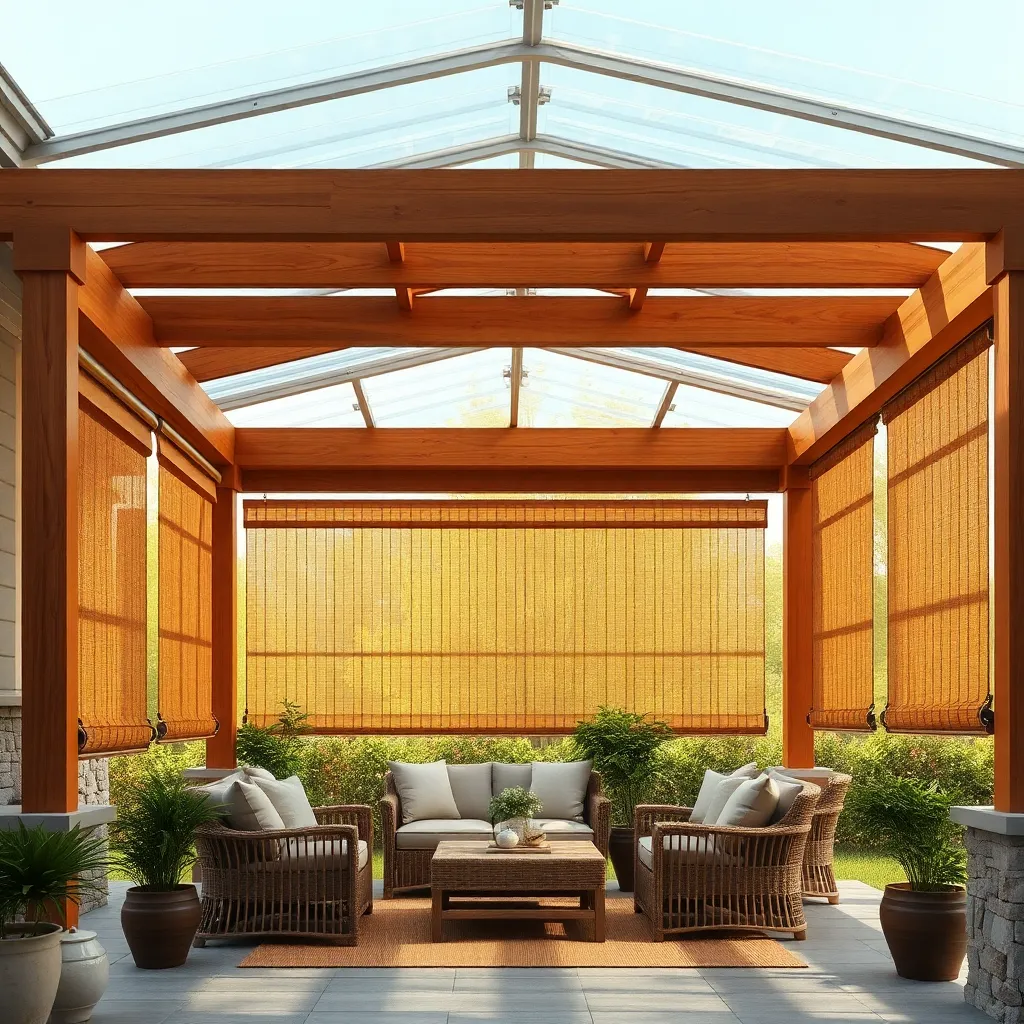
Adding roll-up bamboo shades to your outdoor shelter is an excellent way to create adjustable privacy and shade while maintaining a natural aesthetic. Choose shades made from durable, weather-resistant bamboo slats tied with strong nylon cords for longevity. For best results, install sturdy mounting brackets spaced evenly to support the weight and allow smooth rolling; standard shade widths range from 3 to 6 feet, making them ideal for patios or pergola sides.
For a professional touch, consider reinforcing the edges with fabric trim to prevent fraying and adding a simple pulley system for ease of operation, especially on larger shades. To enhance usability, pair your bamboo shades with waterproof outdoor curtains or weatherproof hardware to protect them from harsh elements, ensuring your shelter remains cozy and functional throughout the seasons.
Use Heated Outdoor Blankets
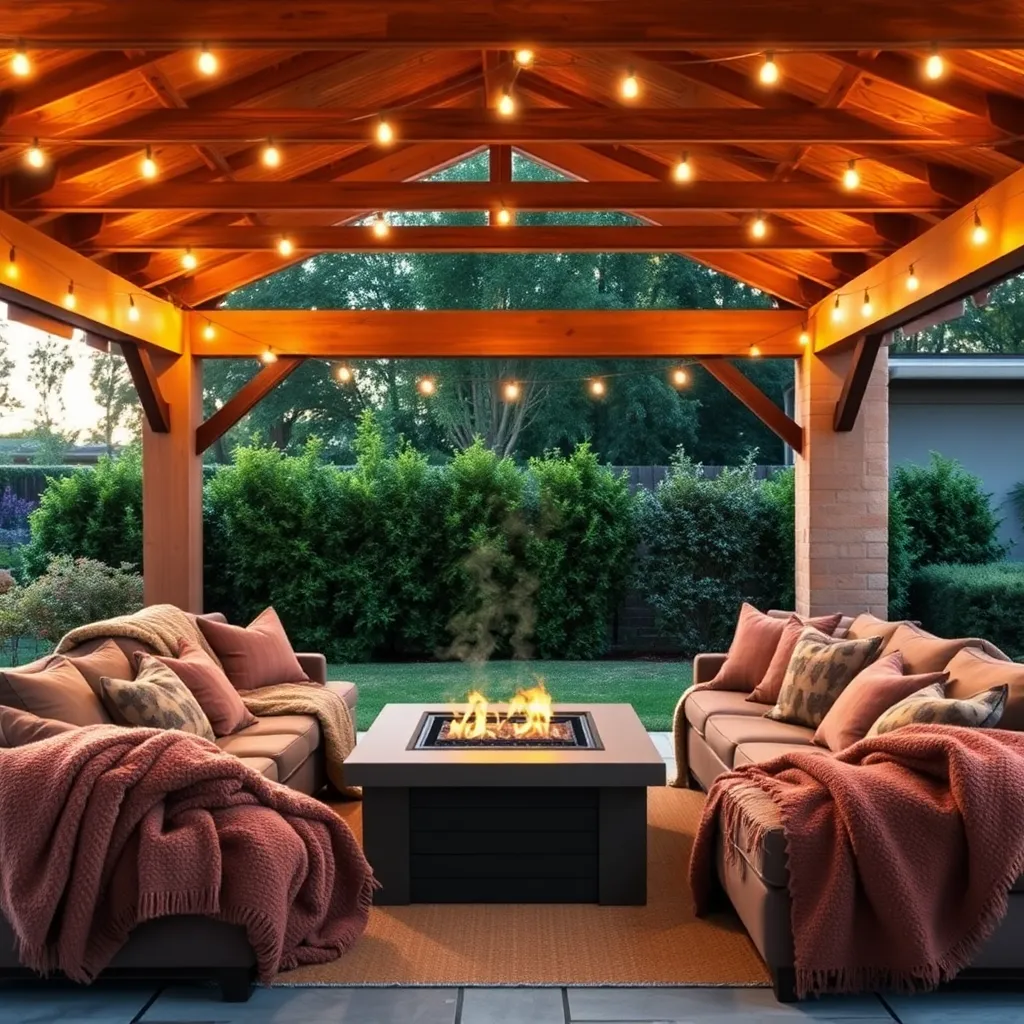
Heated outdoor blankets are a fantastic way to add warmth and comfort to your garden shelter during chilly evenings. Choose blankets made with waterproof, breathable fabrics like ripstop nylon or polyester to withstand outdoor conditions, and look for models with adjustable temperature settings for customized coziness. For best results, secure the blankets using clips or Velcro straps to prevent slipping, especially if your shelter has wind exposure.
To maximize their effectiveness, layer heated blankets over insulated seating cushions or benches, creating a warm seating area that retains heat longer. Advanced gardeners can integrate rechargeable battery packs or solar-powered heating elements to make your setup eco-friendly and cordless. Remember to follow all safety instructions, especially regarding moisture and electrical connections, to keep your outdoor space both cozy and safe.
Position a Stone Garden Fireplace
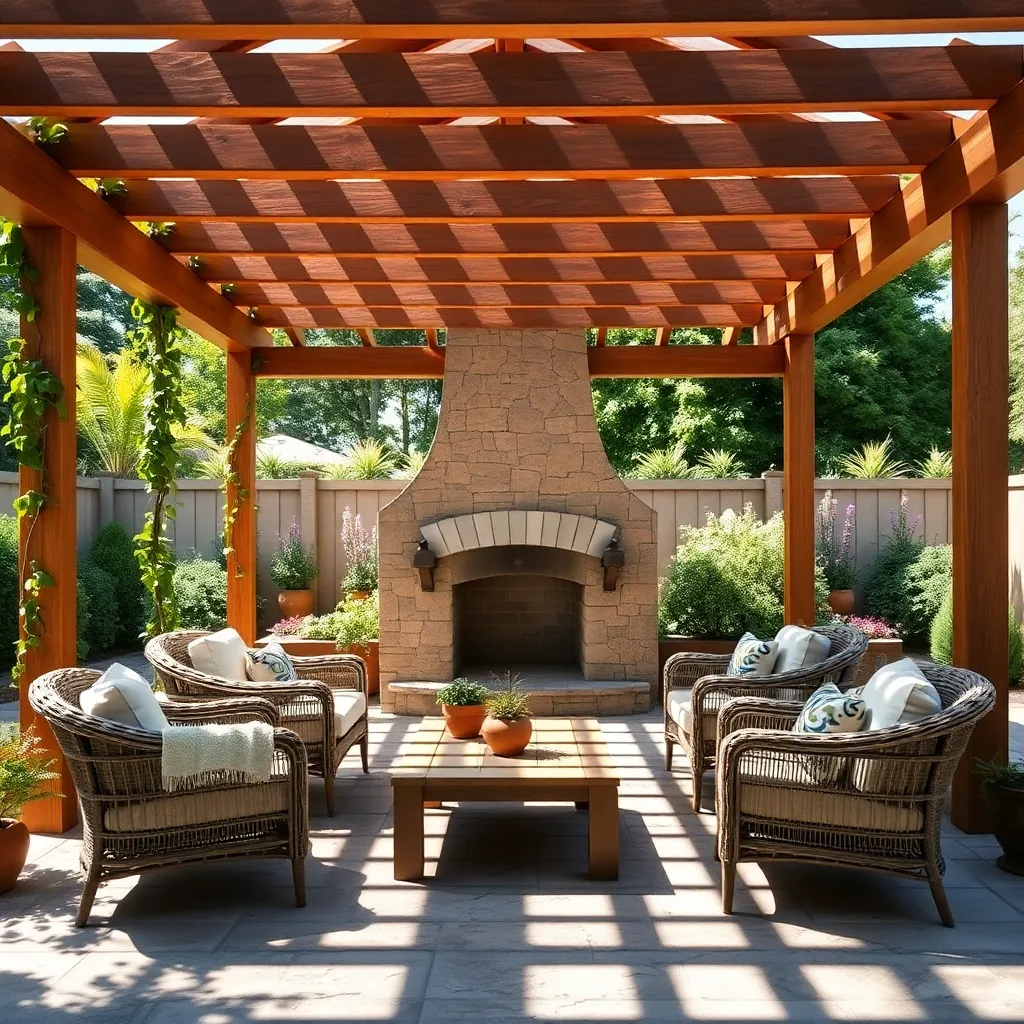
When positioning a stone garden fireplace, choose a spot that maximizes warmth and ambiance while maintaining safety. Place it at least 10 feet away from structures, trees, and flammable materials to prevent fire hazards. Consider building the fireplace on a level, non-combustible surface such as a gravel bed or concrete pad to ensure stability and proper drainage.
Incorporate durable materials like natural stone or fire-rated bricks for both aesthetics and longevity. For a cozy, inviting layout, arrange seating in a semi-circle around the fireplace, leaving at least 3 feet of clearance for comfortable movement. Advanced tip: integrate a built-in firewood storage niche on one side for convenience and a polished look.
Conclusion: Creating Beautiful Outdoor Spaces
Creating a cozy shelter in your outdoor garden is more than just enhancing your space—it’s about nurturing your relationship in a warm, inviting environment. We’ve explored 15 inspiring ideas, from charming pergolas and intimate gazebos to creative canopy setups and comfy outdoor lounges, each designed to foster connection, comfort, and shared moments. Now, take a small but meaningful step: choose one shelter idea that resonates with you and start planning how to bring it to life with your partner. Whether it’s a weekend project or a gradual transformation, every effort counts toward building a loving sanctuary together.
Be sure to save or bookmark this article so you can revisit these ideas whenever you need fresh inspiration for your garden and relationship. Remember, the space you create outside reflects the care and attention you invest in your relationship inside. With a little intention and creativity, your outdoor shelter can become a cherished retreat where your bond grows stronger with every shared sunset and heartfelt conversation. Here’s to cultivating both your garden and your love—one cozy shelter at a time!

